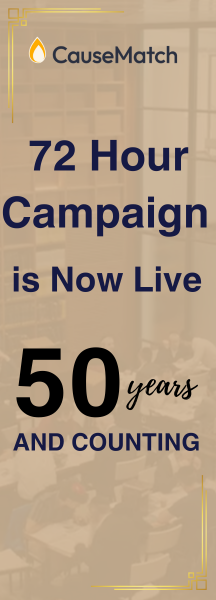Ta'anit 2 - 8
The Three Keys
The keys to three of Hashem's treasure houses were not placed in the hands of any agent, states Rabbi Yochanan. The keys to rain, childbirth and resurrection of the dead are held by Hashem alone.
Tosefot poses the challenge that the key to rain was given to the Prophet Eliyahu (Masechta Sanhedrin 113a) which enabled him to declare (Melachim I 17:1) "during these years there shall be no dew or rain save upon my word." Tosefot's resolution is that this was only a temporary transfer of power.
Rashi seems to have anticipated this challenge by explaining that all three keys have never been placed in the hands of an agent at one time. This is a subtle reference to what the aforementioned gemara describes as the aftermath of Eliyahu's withholding rain to punish an idol-worshipping country and king. Immediately after a passage describing the drying up of the nation's water supply, another passage relates that Hashem commanded Eliyahu to go to the home of a widow in the city of Tzorfat where he was soon faced with the challenge of resurrecting her dead child (Melachim I 17:7-22). There is a connection, our Sages say, between these two events. When Hashem decided that the people had suffered enough from Eliyahu's withholding of rain, He arranged for Eliyahu to be placed in a situation of attempting resurrection. Eliyahu prayed that Hashem give him the key to resurrection so he could restore life to the child of the widow who had shown him so much hospitality. Hashem's response was that He alone had control of the three aforementioned keys, and the one to rain had already been given to the prophet. If Eliyahu were to receive the key to resurrection as well, it would result in the absurd situation of two keys being in the hand of the servant and only one in the hand of the Master. Eliyahu was thus compelled to return the key to rain, and the next chapter (Melachim I 18:1) begins with Hashem restoring rain to the land.
The Human Serpent
In the hereafter, says Rabbi Shimon ben Lakish, all the animals will assemble to thus challenge the serpent: "The lion eats its victim on the spot and the wolf drags it away to its lair for consumption. All animals that kill man enjoy the fruits of their slaying. But you only inject your venom to kill him. What benefit do you have from this to motivate you?"
The serpent's response will be to direct them to the gossiper whose evil tongue slays his victim. "What benefit," he will ask, "does he have from the damage he does?"
This dialogue of the future may be understood as more than trading one question for another. Until the original serpent committed the crime of persuading the first man and woman to eat from the forbidden fruit of the Tree of Knowledge, he walked about on two feet like man. As punishment, he was condemned to crawl upon his belly and to be in eternal mortal conflict with man. This conflict is described in the Torah (Bereishet 3:15) as man's efforts to trample upon the serpent's head and the serpent's efforts to strike at man's heel.
Ever since his fall, the serpent envies the upright position of man which he once enjoyed. Aware that he can never regain that position because of the Divine curse upon him, the serpent tries to do the next best thing - to bring man down to his level by injecting his venom into his body.
When the serpent of the future - expressing the frustration of all serpents back to the beginning of time - directs his challengers to the evil-tongued gossiper, he is offering them an example of his own conduct on a human level. What motivates a man to assassinate the character of one whom he envies through his evil tongue is the desire to bring his victim down to his own level in the eyes of his listeners. This, concludes the serpent, explains his motivation as well.







